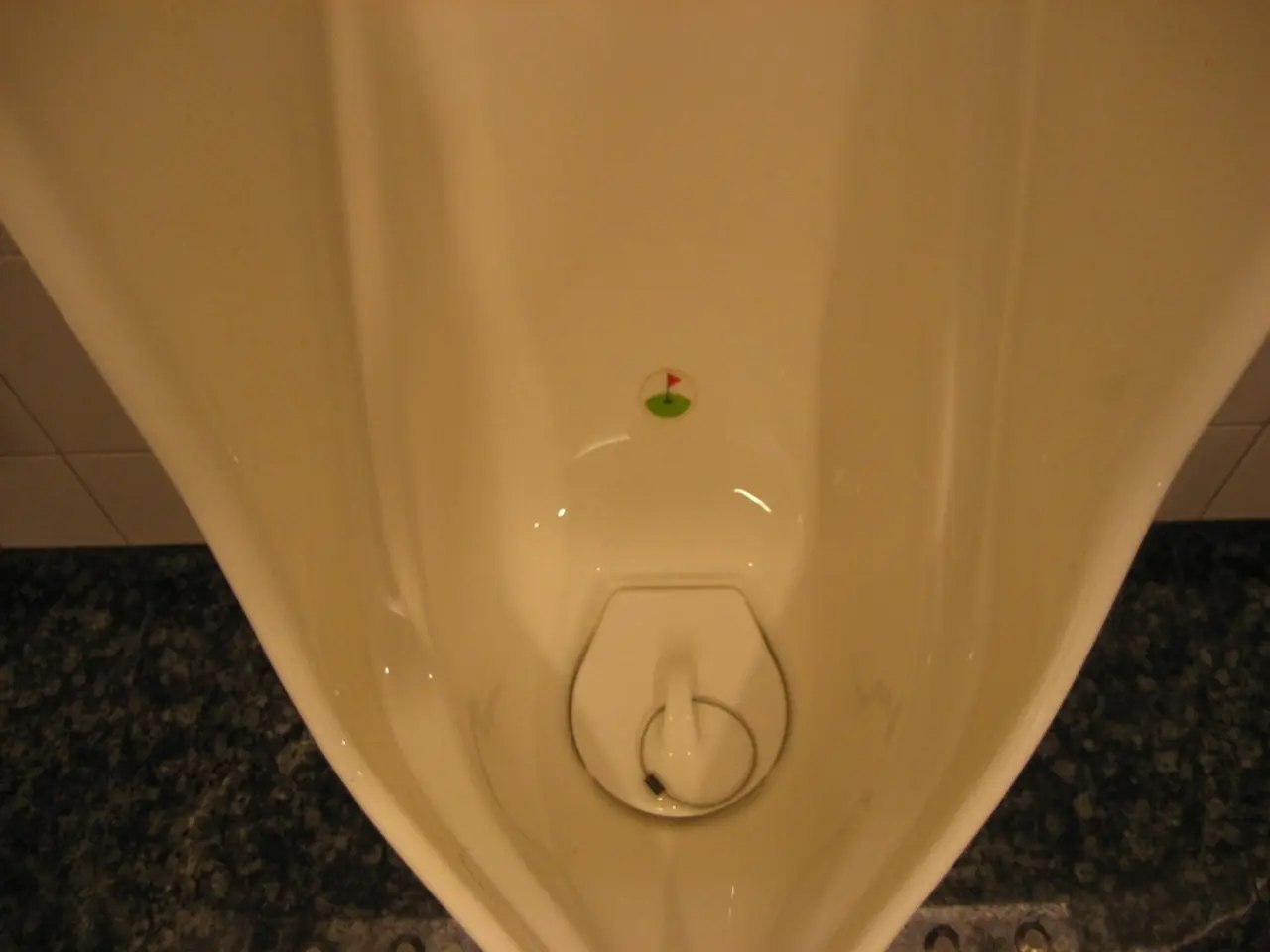Preventing the "persistent cycle of infection" could put an end to long-lasting urinary tract infections.
Let's Talk UTIs: Why You Can't Ignore Your Vagina
Got a cringe-worthy topic on hand? Yup, it's urinary tract infections (UTIs)! Men might get 'em too, but ladies, brace yourselves - a whopping 60% of you will encounter this discomfort at some point in your life.
For some unlucky ladies, UTIs can become an unwelcome, chronic problem, ushering in a never-ending cycle of infections. And here's where things get tricky: overusing antibiotics to treat these infections fuels antibiotic resistance, rendering these life-saving drugs less effective. Ouch!
But fear not, there's a natural alternative in town. Now, let's dive into why effectively tackling UTIs may require thinking beyond the bladder.
The Vagina-Bladder Connection: A Game Changer
For ages, it's been assumed that the bacteria causing UTIs reside solely in the bladder. But recent research by Dr. Takanori Sekito and his team at Okayama University's Graduate School of Medicine turned that assumption on its head. They found that the DNA of bacteria in both the bladder and vagina of infected women was virtually identical.
So, what happens next? The bacteria shuttle back and forth between the vagina and the bladder, creating a near-impossible-to-treat infection loop. As Dr. Sekito puts it, “The vagina can serve as a reservoir for enteric bacteria, including E. coli, and cystitis can become intractable.”
This groundbreaking discovery paves the way for more focused treatment and prevention strategies that don't involve antibiotics. Dr. Sekito suggests developing Lactobacillus vaginal suppositories to regulate the vaginal environment and reduce the virulence of E. coli, making it harder for the bacteria to cause infections.
Natural UTI Remedies
While we wait for those suppositories to hit the market, there's no need to suffer. Here are some science-backed natural methods to take on those pesky infections:
Probiotics: Certain strains of lactobacillus, found in probiotic foods or supplements, stick to the vaginal walls and are effective against UTI-causing pathogens. Look for probiotics specifically targeting urinary health. Remember, you need to feed these good bacteria with prebiotics, found in foods like bananas, oats, asparagus, flax seeds, apples, and supplements.
Cranberries: Known anecdotally for decades, research has finally proven that cranberries can help keep UTIs at bay. They contain proanthocyanidins that prevent E. coli from sticking to the urinary tract lining.
Manuka honey: Produced by bees that feed on the Manuka tree native to New Zealand, this honey can inhibit the growth of UTI-causing bacteria and prevent them from forming biofilms.
Other tips to reduce UTI risk include:
- Wearing loose-fitting clothing
- Drinking plenty of water
- Emptying your bladder completely when urinating
- Taking vitamin C
So there you have it - a take on UTIs that shows why addressing both your bladder and vagina is essential to breaking the infection cycle. Happy healing!
Sources:
- A tale of two "niches": The microbial connection between urinary bladder and vagina - Eureka Alert
- Are probiotics good for vaginal health? - Cleveland Clinic
- Homology of Escherichia coli isolated from urine and vagina and their antimicrobial susceptibility in postmenopausal women with recurrent cystitis - Journal of Infection and Chemotherapy
- Urinary tract infections (UTIs), though not pleasant, are a common health issue affecting 60% of women.
- Chronic UTIs can create a cycle of infections, leading to overuse of antibiotics and the development of antibiotic resistance.
- A recent study by Dr. Takanori Sekito suggests that bacteria causing UTIs may reside in both the bladder and vagina.
- The bacteria can shuttle back and forth between the vagina and bladder, making the infection harder to treat.
- The discovery of this vagina-bladder connection opens up new possibilities for targeted treatment and prevention strategies.
- Lactobacillus vaginal suppositories may help regulate the vaginal environment and reduce E. coli virulence.
- Probiotics, especially strains targeting urinary health, can help combat UTI-causing pathogens.
- Prebiotics, found in foods like bananas, oats, and asparagus, are necessary to feed these good bacteria.
- Cranberries, with their proanthocyanidins, can prevent E. coli from sticking to the urinary tract lining.
- Manuka honey can inhibit the growth of UTI-causing bacteria and prevent them from forming biofilms.
- Wearing loose-fitting clothing can help reduce UTI risk.
- Drinking plenty of water and emptying the bladder completely when urinating are also recommended to reduce UTI risk.
- Vitamin C may help reduce the risk of UTIs.
- Natural methods like probiotics, cranberries, and Manuka honey provide science-backed alternatives to traditional antibiotic treatment.
- In the meantime, it's essential to approach UTIs as a problem affecting both the bladder and vagina.
- Understanding the vagina-bladder connection is key to breaking the infection cycle and finding effective treatment strategies.
- Wellness doesn't just involve physical health; mental health, skin care, women's health, cardiovascular health, and more should all be considered.
- Fitness and exercise, autoimmune disorders, and mental health are other aspects of health and wellness that require attention.
- Skin conditions like acne, eczema, and psoriasis can be managed with proper skin care and treatment.
- Women's health includes issues specific to menstruation, pregnancy, and menopause, in addition to UTIs.
- Cardiovascular health is crucial for maintaining a healthy heart and reducing the risk of chronic diseases like heart disease and cancer.
- Respiratory conditions, digestive health, and eye health are also vital for overall wellness.
- Hearing health should not be overlooked as it affects one's ability to communicate and enjoy life.
- Home-and-garden topics, such as interior design, cooking, and baking, can contribute to a healthier, happier lifestyle.
- Smart home devices like wearables and smartphones can help monitor health and wellness, while gadgets and technology can enhance daily life.
- Cybersecurity and data-and-cloud computing are necessary to keep personal and financial information secure in our increasingly digital world.
- Personal finance, wealth management, savings, and debt management are crucial for maintaining financial wellness.
- Travel, shopping, and product reviews can help individuals make informed decisions about food-and-drink, dining, fashion-and-beauty, and other lifestyle choices.
- Outdoor living can improve mental health and overall wellness through exposure to nature and physical activity.
- Family dynamics, relationships, and support systems play a significant role in overall health and wellness, including mental and physical health.







